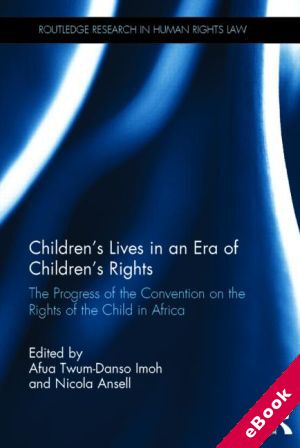
The device(s) you use to access the eBook content must be authorized with an Adobe ID before you download the product otherwise it will fail to register correctly.
For further information see https://www.wildy.com/ebook-formats
Once the order is confirmed an automated e-mail will be sent to you to allow you to download the eBook.
All eBooks are supplied firm sale and cannot be returned. If you believe there is a fault with your eBook then contact us on ebooks@wildy.com and we will help in resolving the issue. This does not affect your statutory rights.
The Convention on the Rights of the Child (CRC), which was adopted unanimously by the United Nations General Assembly in 1989, is the world's most widely and most rapidly ratified international convention. The Convention was adopted partly in an attempt to set international norms and establish a universal standard for the concepts of childhood and child, promote a particular nature of childhood for children everywhere and to set a universal approach for protecting all children around the world. The Convention was different from its predecessors as it recognised children as autonomous individuals and holders of rights, as subjects rather than objects of international law. In this way, then, the Convention marked a turning point in the perception of children in international law and policy. Although it was hoped that the Convention would have a significant and positive impact on the lives of all children, which was one of the main guiding principles behind its creation, this has not happened in many parts of the world.
With specific regards to Africa, all countries have struggled to put in place the minimum standards to ensure children's rights and well being as a result of socio-economic factors, religion, culture, lack of political will, amongst others. This is particularly concerning for a continent where the proportion of the population under the age of 18 is the highest in the world. This book assesses the progress the Convention has made in the past two decades in ten different African countries as well as in the region more generally. It considers the implementation of the Convention both in terms of policy and practice and its impact on the lived experiences of children in societies across the continent, focusing on specific themes such as HIV/AIDS, education and disability, child labour, witchcraft stigmatisation, armed conflict and religion. The volume provides critical analysis of the progress of the Convention and identifies concrete ways forward for the better implementation of this treaty in the various social, cultural and political contexts that exist in Africa.